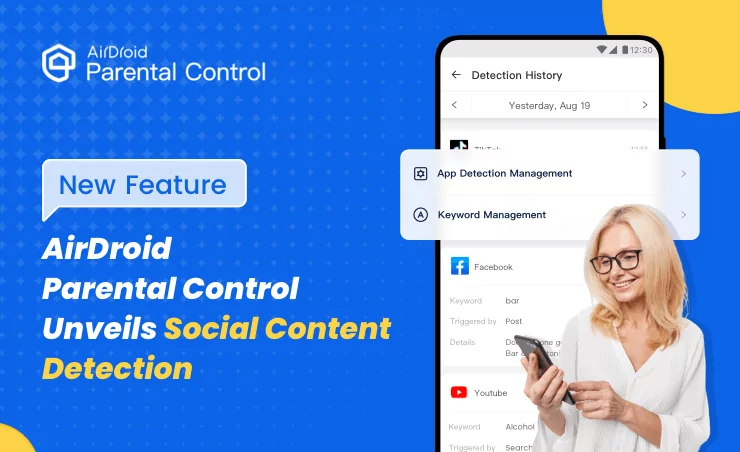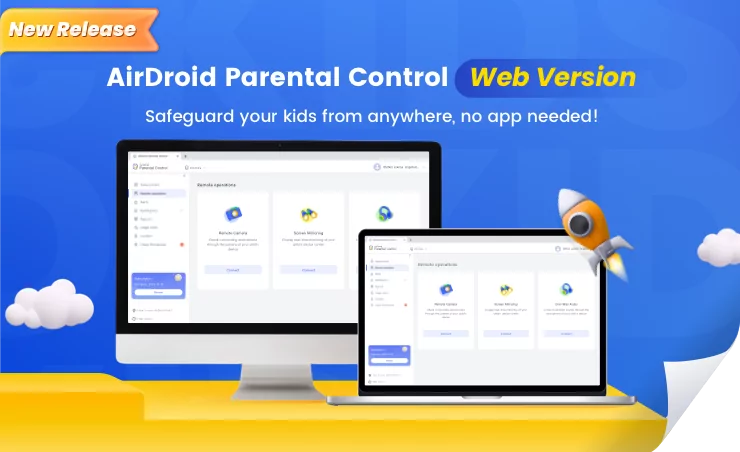The Ultimate Guide to Starting an IT Company
Did you know IT spending remains steady despite inflation reducing customer buying power? With the Statista forecast report projecting a 5.76% growth in the IT services Market between 2024 and 2029, it's evident there are endless opportunities tech professionals can explore to their advantage.
Although the IT industry is super-competitive, with renowned players, what determines your success is your unique selling point and strategy. In this blog post, you'll learn how to start your own it company, associated risks, as well as actionable tips to help you succeed.
- Part 1 :How to Start an IT Company
- 1 :Decide and write down your IT offerings
- 2 :Conduct your market research
- 3 :Write a business plan
- 4 :Define your business entity type
- 5 :Layout a legal structure
- 6 :Create a budget and funding model
- 7 :Build a professional team
- 8 :Create a minimum viable product (MVP)
- 9 :Sales, Marketing, and networking
- 10 :Launch your products and scale your business
Part 1 : How to Start an IT Company
Starting an IT company can be exciting and daunting in equal measure. While research shows that only 63% of tech startups make it past the first five years, don’t let it discourage you. Your success depends on the perfect idea, the right action plan, clear solution-driven business goals, and a passionate tech team.
If you’re wondering how to start an it business, here are the strategic steps to follow:
1. Decide and write down your IT offerings
The first step if you’re seeking to start your own IT company is deciding your best ideas. What IT services do you want to offer? What is your desired niche? Do you want to focus on Fintech products, apps, ecommerce software, digital communications, IT equipment, network services or security procedures?
Decide on your various IT offerings and list them down. Great ideas act as a foundation for any business because they help you draw a clear roadmap. When starting out, Jeff Bezos, founder of Amazon, had a long list of possible products he wanted to offer, including baby products. However, he saw the high demand for literature and decided to offer books online. From one great idea, Amazon has grown into one of the top five tech companies today.
Similarly, take time to decide your IT offerings, write them down, compare and pick the best ones for your startup. When choosing products and services to offer, consider the following:
- Existing problems: Which IT problems have you noted? Explore various problems that you want to solve. Have you noted businesses struggling with risk assessments, tech support, or software installations?
- Demand: Ensure the product or service you’re seeking to offer is in demand. There should be a need that prompts people to spend on your IT service. So, choose a product in high demand for your business to succeed.
- Skillset/experience: IT solutions require specific skills and experiences, unlike other businesses. For example, a security strategist may not efficiently provide network design services because it’s not their area of expertise. Go for IT offerings within your skill set to ensure the delivery of top-notch services.
- Passion: passion positively affects businesses’ success. According to research, passion enhances creativity, performance, and persistence in entrepreneurs. When deciding your offerings, select the ones you're most passionate about.
Once you get this step right, devise clear goals to provide IT solutions.
2. Conduct your market research
After identifying and deciding the IT services you want to offer, conduct in-depth market research. Research gives a deeper insight into your local and international competitors in the IT industry, target audience, and demand.
The launch of the first iPhone by Apple Inc. is a classic example of what good market research can do. After using surveys, focused group discussions, and interviews, the company discovered mobile phone users' pain points, including poor user interfaces and minimal features. Based on the research feedback, Apple built the iPhone smartphone with an intuitive design and more fun features than Nokia or Blackberry. After its launch in June 2007, the company sold 1.4 million phones, and by 2023, the company had sold 231 million units.

Here’s how to do a market research:
- Know your potential clients: Identify your target group. Define the ideal customer for your IT services. Who's a typical client for your products? What tech-related challenges do they have? Do they have any special IT needs? Which solutions are they looking for? Get information about your target users to understand their needs more deeply.
- Identify your colleagues: Analyze your competitors to learn from them and know if they offer similar services. If companies provide offerings like yours, find out how you can enhance the existing IT services to create a unique selling point. This helps you to know your market size, helping you to refine your products accordingly.
- Don’t keep your business ideas secret: Share your business ideas with friends and family around you. Getting feedback from trusted people helps you to assess the demand for your IT products or services.
- Know about pricing: Finally, research various pricing models in the market. How much money would your target clients spend on your IT offerings? What is the average price for services within your niche? Ensure you price your products wisely to attract customers without compromising quality.
In addition to creating market-driven IT products, this information from target users and colleagues is helpful when determining pricing.
3. Write a business plan
A business plan acts as a roadmap showing the steps you'll take to achieve your goal. This is no different when starting an IT company. Apart from being helpful to your company, a detailed business plan is essential during business registration and for funding purposes.
While it's not a must-have document for tech startups, writing a business plan is advantageous in more ways than one. It paints a clearer picture of opportunities, unique needs, and business challenges, outlining how you plan to proceed.
What should I include in my business plan? Include the key details below:
- Business goals: What are your long-term and short-term business objectives? Determining what you want to achieve with your IT business is crucial for you to develop an actionable, results-oriented plan.
- Target clients: Who are your potential clients? Be clear about the preferences and unique needs of your target clients. Who are you planning to offer solutions? Capture this in your business plan.
- Market and competitor analysis: Including information from market research and competitor analysis guides you in pricing your IT services, giving you an edge over your competitors.
- Operating costs: Calculate and write down the business's expected cost, including office rent or lease expenses.
- Financing plan: Your business plan should explain how you intend to finance your startup's operations. Are you planning to apply for crowdfunding or grants? Will you source capital from friends and family? Be clear on your financing plan.
- Financial forecasts: Write an estimate of your IT business's past, current, and future financial condition. This helps in strategic resource allocation, decision-making, and budgeting.
- Marketing strategies: Explain how you intend to promote your business to enhance growth and success.
4. Define your business entity type
Since you've completed the preliminary steps, it's time to choose the right business structure. The majority of IT companies are sole proprietorships, partnerships, limited liability companies, or S. corporations (S.corp).
It’s worth noting that the amount of paperwork you will need, your personal accounting liability, and your tax impact will depend on the business structure you choose. However, the size of your IT company will guide you on the most suitable entity for your needs. For example, if you’re planning to run the business alone with the help of freelancers, a sole proprietorship may be the best option.
Due to different paperwork requirements and restrictions, LLC and S.corp businesses may be costlier. Discuss with your team of financial advisors to know the best option for your startup. Ensure you understand the tax requirement of each option to avoid making expensive business mistakes.
Additionally, select a name for your business that reflects your unique services. Ensure it's short, memorable, and unique to give your brand credibility and legal protection. A perfect name should be easily identifiable.
For instance, Bill Gates and Paul Allen settled on the name Microsoft as a short form of the main products they were selling- Micro-computer software. From 1911 to date, the name has remained concise and authentic, giving the tech business a unique trademark.
5. Layout a legal structure
If you want to understand how to start an it consulting business that succeeds, you have to consider the legal side of startups. What does the law say about starting a new IT company? Are there any legal requirements?
Getting a license is one way of making your business legally compliant. Registration varies from country to country or state to state. Additionally, different industries follow unique registration processes.
Visit your state’s office or research online from their website to know specific licensing requirements for IT businesses. The U.S. Chamber of Commerce recommends consulting a professional about regulatory requirements unless you're a licensing and permits expert.
The license type and cost depend on your business's entity type. For instance, a sole proprietor's license requirements differ from an LLC's. company. However, there are basic details you'll provide about your business, such as:
- Business name and type
- Employees’ name, if available
- Business type
- Business name and address
- Owner’s name and contact information
It’s noteworthy that some states may charge you an application fee. Also, the waiting period before your license is ready and the renewal period varies by state. Find out this information from your colleagues or the relevant state department beforehand to smoothen your licensing process.
6. Create a budget and funding model
When starting an IT company, you’ll require a budget to distribute financial resources across all business aspects. Budgeting ensures you spend money wisely to prevent running short of money for business operations prematurely.
In fact, according to Forbes, lack of financial management is one of the top factors behind the failure of IT startups. To avoid this business nightmare, budget wisely. Here’s how:
- Calculate all expenses, including loans, labor, hosting servers, software licenses, IT equipment, and insurance premiums.
- Determine your monthly or yearly revenue. If you're starting, estimate your revenue based on specific goals.
- Calculate and monitor your profit margin to see if you balance the revenue versus expenses.
You'll require financing for your new IT business like any other company. Once you're through with your business plan and licenses, it's time to figure out how to fund your ideas.
The most common sources of funding businesses are friends/family and personal savings. If you can't cover the costs through social networks or self-funding (bootstrapping), you can explore other funding options, including:
- Venture Capital Firms: Research venture capital firms that offer funding specifically to IT-related businesses. America's seed fund is among companies that provide funds for IT startups. You'll need a detailed business plan and a convincing pitch to secure funding.
- U.S. Small Business Administration (SBA) Grants: You can apply for various SBA grants for your IT venture. For instance, if you offer IT management services and technical assistance, consider applying for SBA's 7(j) Management and Technical Assistance Services Business Grant.
- Crowdfunding platforms: Explore crowdfunding platforms such as GoFundMe, Fundable, and Kickstarter to get funding for your IT company.
- SBA microloans: The SBA offers small and micro business loans at a lower interest. Learn about their loans and apply for those that suit your unique needs.
- Angel investors: You can also get capital for your IT Company from Angel investors within your niche. To get the right investor, ensure you have compelling business ideas and a clear business plan. Aside from funding, angel investors also provide guidance.
7. Build a professional team
IT business is challenging. You cannot run your tech company alone no matter your experience level.
To get your business off the ground, plan your hiring process in order of priority. Start with specialists who are the backbone of your company, like developers, and add the rest as you grow.
Establish a team of talented, committed professionals to help you implement your business plan for maximum success. Ensure everyone, from your co-founders to your employees, shares your business's vision.
For example, when Facebook was a startup, Mark Zuckerberg hired product development specialists to be the backbone of his company. As the company grew into a multi-million-dollar IT business, he hired more web designers, coding experts, and programmers based purely on talent. A lesson from Zuckerberg and Facebook is that the right team includes people with the right attitude, not competence.
When building a professional team, include various experts to implement your goals. Hire strategically in different areas of your business, including product development, marketing, and sales. Conduct thorough background checks for all team members to ensure they're trustworthy and can handle your company's confidential information.
Since hiring an efficient in-house team could be daunting and costly, you may consider getting freelancers with a per-project pay schedule. If your budget allows, let an IT staff augmentation company hire on your behalf.
8. Create a minimum viable product (MVP)
Developing a minimum viable product (MVP) is a crucial step if you want to minimize IT startup risks. It marks the start of your product cycle.
Instead of launching an IT product or service fully, create a simpler version and release it to the market. MVPs are cheaper to build and allow target customers to validate your idea before it's fully blown.
Create a prototype through your product design technical team and share it with the target end users to know if it’s worth launching or not. Some main benefits of MVPs include:
- Lead generation: Sharing an MVP with potential clients could generate early leads for your IT company. While testing different product features, some of your target users may want your services.
- Feedback gathering: MVPs answer serious questions about your new product. Through client feedback, you'll know if the product provides real-life solutions. Also, you'll get feedback about the product's value to customers and if it's worthwhile.
- Saving time and money: An MVP is cheaper and quicker to create than a full product because it is a prototype. Additionally, it prevents huge losses associated with launching the full product without pilot testing.
9. Sales, Marketing, and networking
Once you validate your IT offerings, the hard part is getting clients. Develop a clear marketing plan and strategy to promote your products online and offline.
As an IT company dealing in digital products, online marketing is essential. Some sales and marketing options are:
- Create and optimize a website: For starters, get a website for your business and optimize it for SEO to enhance visibility on search engines. A website lets online users know about your brand.
Hire a professional web designer for this, or if you're running on a tight budget, design with free online tools such as WordPress, Wix, or Squarespace. Ensure your website is user-centric, simple and easy-to-navigate to enhance a smooth user experience.
- Social media: Another viable sales and marketing strategy involves leveraging the power of social media to attract potential clients for your business. Determine whether your target audience hangs out on Facebook, Instagram, or TikTok and decide on the most suitable campaign to launch. Understand how each site works before launching your marketing strategy.
Hewlett Packard (HP) is a leading IT company that understands the benefits of using social media platforms for business. The company uses its Facebook page, which has over 4.6 million users, to promote new products, launch marketing campaigns, and share industry news. And it pays handsomely!

- Networking: You can acquire clients for your venture by networking with friends, competitors, and industry professionals. Attend IT-related events physically and virtually through online forums to learn from others.
Take advantage of such opportunities to promote your new startup. Share presentations, business cards, and fliers to inform people about your brand. Keep contact details of potential clients and follow up appropriately. Focus on building relationships first, and loyal customers will follow.
10. Launch your products and scale your business
After completing all the preparation steps, you can now launch your IT business. Release your offerings to customers and start monitoring your growth.
Tracking your offering's performance helps you determine areas for improvement. Collect as much feedback as possible and iterate where necessary.
As your business model bears fruit, scale your operations by looking for new growth opportunities, acquiring new customers, and adding new product features. Growth is a process requiring patience, persistence, and an openness to learning.
The tech industry is ever-changing. Therefore, learning new technologies and adapting to new IT market trends is inevitable.
Additionally, build a support network to motivate you when things get challenging. Don't stop marketing; it's a continual process essential at every stage of your IT business.
By now, you've learned how to start it support business; congratulations. The journey is as exciting as it is challenging. That said, it's only fair to understand the risks of starting an IT company. Here are the challenges you should know:
- Ever-changing tech trends: The tech space evolves rapidly. Rapid development is a challenge because you have to spend extra time and resources learning new technology, software, tools, and programming languages.
- Data protection and security issues: The IT industry and software development require high-level data protection and security. Therefore, you must do extra work to protect customer data as per the existing laws.
- IT staffing challenges: With the high demand for IT services, getting the right staff for your IT company may be challenging and expensive.
- Super-competitive market: There were over 9,100 SaaS companies in the U.S. alone in 2024. Since you're venturing into an already mature industry with popular players, competition is a significant challenge for IT startups.
Conclusion
With the IT industry growing rapidly by the day, it presents an exponential opportunity for tech professionals and enthusiasts to start businesses. This timely guide on how to start an it company takes you through the steps you can take to establish a successful tech company. Your startup may not grow like Oracle overnight, but you'll succeed with persistence and data-driven improvements.











Leave a Reply.